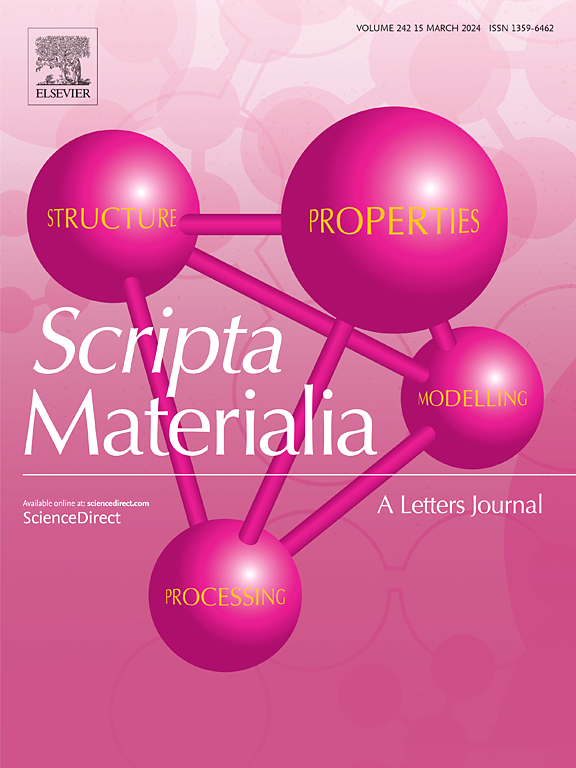稀土和镍对钼薄膜高温稳定性和导电性的影响
IF 5.3
2区 材料科学
Q2 MATERIALS SCIENCE, MULTIDISCIPLINARY
引用次数: 0
摘要
本文采用磁控溅射法制备了Mo90Ta5Ni5和Mo90Ta5Re5合金薄膜。研究了退火(500 ~ 700℃)对其高温稳定性和电导率的影响。结果表明,稀土元素显著改善了薄膜的性能,沉积的Mo-Ta-Re薄膜的电阻率(95 Ohm·nm)比Mo-Ta-Ni薄膜的电阻率低47%。在700℃退火后,由于结晶度增强和结构分层抑制,电阻率进一步降低至82欧姆·nm。相反,在700℃退火后,由于Ta选择性氧化,ni掺杂薄膜的电阻率异常升高至210.67 Ohm·nm。密度泛函理论(DFT)揭示了Ta-Re之间的短程吸引和Ta-Ni之间的排斥的原子机制,并阐明了重稳定合金结构的电子效应。本文章由计算机程序翻译,如有差异,请以英文原文为准。

Effects of Re and Ni on high-temperature stability and electrical conductivity in Mo thin films
In this paper, Mo90Ta5Ni5 and Mo90Ta5Re5 alloy films were prepared by magnetron sputtering. The effects of annealing (500–700 °C) on their high temperature stability and electrical conductivity were studied. The results show that Re significantly improves the film properties: the resistivity of the deposited Mo-Ta-Re film (95 Ohm·nm) is 47 % lower than that of Mo-Ta-Ni. After annealing at 700 °C, the resistivity further decreases to 82 Ohm·nm due to enhanced crystallinity and inhibition of structural delamination. On the contrary, the resistivity of Ni-doped films after annealing at 700 °C increases abnormally to 210.67 Ohm·nm due to Ta selective oxidation. Density functional theory (DFT) revealed the atomic mechanism of the short-range attraction between Ta-Re and the repulsion between Ta-Ni, and clarified the electronic effects of Re-stabilized alloy structures.
求助全文
通过发布文献求助,成功后即可免费获取论文全文。
去求助
来源期刊

Scripta Materialia
工程技术-材料科学:综合
CiteScore
11.40
自引率
5.00%
发文量
581
审稿时长
34 days
期刊介绍:
Scripta Materialia is a LETTERS journal of Acta Materialia, providing a forum for the rapid publication of short communications on the relationship between the structure and the properties of inorganic materials. The emphasis is on originality rather than incremental research. Short reports on the development of materials with novel or substantially improved properties are also welcomed. Emphasis is on either the functional or mechanical behavior of metals, ceramics and semiconductors at all length scales.
 求助内容:
求助内容: 应助结果提醒方式:
应助结果提醒方式:


